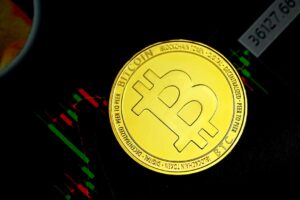The foreign exchange market, or Forex, is the largest and most liquid financial market in the world. With an average daily trading volume of over $5 trillion, it attracts investors from all around the globe. Over the years, technology has played a significant role in shaping and revolutionizing the Forex market. In this article, we will take a historical perspective on the impact of technology on Forex.
The Evolution of Forex Trading Platforms
In the early days of Forex, trading was conducted over the telephone or through physical trading floors. Traders had to rely on their knowledge and intuition to make trading decisions. However, with the advent of technology, the trading process became more streamlined and accessible.
The first major technological development in Forex was the introduction of electronic trading platforms. In the 1970s, computer networks started connecting banks and financial institutions, enabling them to trade currencies electronically. This marked a significant shift in the Forex market, as it allowed for faster and more efficient trading.
As technology advanced, trading platforms became more sophisticated. The introduction of online trading platforms in the 1990s made Forex accessible to individual traders. Now, anyone with an internet connection and a computer could trade currencies from the comfort of their own home. This democratization of Forex trading led to a surge in retail participation and contributed to the market’s growth.
The Role of Automation and Algorithms
Another significant impact of technology on Forex is the rise of automation and algorithmic trading. In the early 2000s, traders started using computer programs to execute trades automatically based on pre-determined rules and algorithms. This automated trading, also known as algorithmic trading or algo-trading, allowed for faster execution and eliminated human emotions from the trading process.
Algorithmic trading relies on complex mathematical models and algorithms to analyze market data and generate trading signals. These algorithms can process vast amounts of data in a fraction of a second, enabling traders to take advantage of short-lived market opportunities. High-frequency trading (HFT), a subset of algorithmic trading, takes this concept to the extreme by executing thousands of trades in a matter of milliseconds.
The rise of automation and algorithms has brought both benefits and challenges to the Forex market. On one hand, it has increased market liquidity and efficiency, as trades can be executed with minimal delay and at the best available prices. On the other hand, it has also raised concerns about market manipulation and the potential for flash crashes, as algorithms can amplify market movements.
The Influence of Big Data and Artificial Intelligence
In recent years, the Forex market has witnessed another technological revolution fueled by big data and artificial intelligence (AI). Big data refers to the massive amount of structured and unstructured data generated by various sources, such as social media, news articles, and economic indicators. AI, on the other hand, refers to the ability of machines to learn from data and make intelligent decisions.
Big data and AI have transformed the way traders analyze and interpret market information. By processing vast amounts of data, AI algorithms can identify patterns and trends that may not be apparent to humans. This allows traders to make more informed decisions and potentially gain a competitive edge in the market.
Furthermore, AI-powered trading systems can adapt and learn from market conditions, continuously improving their trading strategies. These systems can also automate various aspects of trading, such as trade execution and risk management, freeing up traders’ time and allowing them to focus on higher-level tasks.
The Future of Forex Technology
Looking ahead, technology is expected to continue shaping the Forex market. With the advancement of blockchain technology, there is the potential for decentralized trading platforms that eliminate the need for intermediaries. This could further reduce transaction costs and increase transparency in the market.
Additionally, advancements in machine learning and natural language processing could enhance the capabilities of AI-powered trading systems. These systems could become more adept at understanding and interpreting news events and sentiment analysis, providing traders with valuable real-time insights.
However, along with the benefits, technological advancements also bring challenges. Cybersecurity threats and the potential for market disruptions due to technical glitches or algorithmic errors are constant concerns. Regulators will need to adapt and develop frameworks to address these issues and ensure the integrity and stability of the Forex market.
In conclusion, technology has had a profound impact on the Forex market throughout its history. From the introduction of electronic trading platforms to the rise of automation and AI, technology has transformed the way Forex is traded. As technology continues to evolve, the Forex market will undoubtedly continue to adapt and embrace new advancements, shaping the future of this dynamic and ever-changing market.





